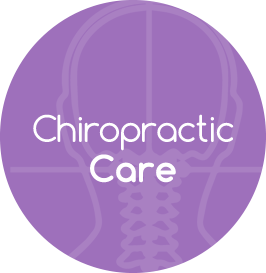Hypothyroidism Facts
Hypothyroidism is a common endocrine disorder that is characterized by a deficiency in thyroid hormone. Hypothyroidism affects approximately 10% of women and 6% of men under the age of 65 in the United States. The prevalence of hypothyroidism is steadily increasing. It is found to be 2-8 times more common in women than men and has a higher incidence in Caucasian and Mexican-Americans compared to African Americans.
Primary hypothyroidism is defined as thyroid gland dysfunction characterized by increased levels of thyroid-stimulating hormone (TSH) and decreased levels of thyroid hormones T3 and T4. Common causes of primary hypothyroidism are iodine deficiency, autoimmune disease also known as Hashimoto’s Thyroiditis, surgical or radiation induced, or infection.
Secondary or central hypothyroidism is defined by dysfunction of the hypothalamus or anterior pituitary. This is characterized by low, normal, or mildly elevated TSH secretion and a decrease in thyroid hormones triiodothyronine (T3) and thyroxine (T4) production and secretion.
Neuroendocrine regulation of the thyroid gland is controlled via the hypothalamic-pituitary-thyroid (HPT) axis.
Thyroid hormones have an array of effects on the body. This includes an increase in carbohydrate metabolism and synthesis, protein synthesis, and degradation of lipids. In addition, thyroid hormones are necessary for myelination of nerve fibers and nervous system development, increased number and activity of mitochondria, assist in skeletal growth and normal muscle function. As a result of thyroid hormones control on metabolism – cardiac output, heart rate, blood flow, and respiration are also affected. Gastrointestinal mobility, sleep, sexual function, and control of other endocrine organs are all dependent on thyroid hormone production.
Proper functioning of the nervous system is necessary for proper neuroendocrine function. Structural shifts in the spine called vertebral subluxations can interfere with that function by obstructing nerves. These obstructions can then affect hormone secretions and result in disorders such as hypothyroidism.
Case Study
The 61-year-old female in this study had been experiencing thyroid problems, weight gain, decreased energy, fatigue, migraines, dizziness, vertigo, tinnitus, and Meniere’s disease for several years. She really was looking for answers as her symptoms were interfering with her ability to interact with her grandchildren. Several visits to the medical doctor did not help.
The chiropractor examined her and found tight muscles and structural shifts in her neck, upper back, mid back, low back, and pelvis. Range of motion and x-rays confirmed the findings. These structural shifts can lead to obstruction of the nerves and it is this obstruction, called vertebral subluxations, that chiropractors correct.
Following chiropractic adjustments, she experienced marked improvement in her symptoms. She began to have more energy, her weight stabilized, and her episodes of tinnitus decreased. Her hypothyroidism resolved and was confirmed via lab testing.
The study’s author called for additional research to investigate the clinical implications of chiropractic in this population.
Reference: Hypothyroidism and Chiropractic Care via Torque Release Technique: A Case Study. Daniel Wallis, DC & Vincent Cuviello, DC. Annals of Vertebral Subluxation Research ˜ Volume, 2020.


